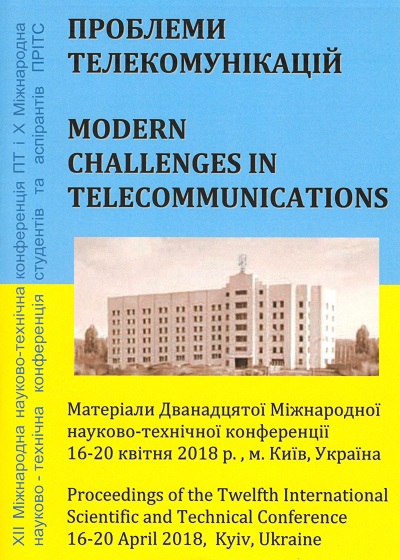АНАЛИЗ МЕТОДОВ ПРОГНОЗИРОВАНИЯ С ИСПОЛЬЗОВАНИЕМ НЕЙРОННОЙ СЕТИ
Анотація
Analysis of Forecasting Methods using Neural NetworksWas analyzed forecast of Internet traffic as an important issue that has received few attentions from the computer networks field. By improving this task, efficient traffic engineering and anomaly detection tools can be created, resulting in economic gains from better resource management. This paper presents a Neural Network Ensemble (NNE) for the prediction of TCP/IP traffic using a Time Series Forecasting (TSF) point of view. Several experiments were devised by considering real-world data from two large Internet Service Providers. In addition, different time scales (e.g. every five minutes and hourly) and forecasting horizons were analyzed. Overall, the NNE approach is competitive when compared with other TSF methods (e.g. Holt-Winters and ARIMA).
Analysis of Forecasting Methods using Neural Networks
Was analyzed forecast of Internet traffic as an important issue that has received few attentions from the computer networks field. By improving this task, efficient traffic engineering and anomaly detection tools can be created, resulting in economic gains from better resource management. This paper presents a Neural Network Ensemble (NNE) for the prediction of TCP/IP traffic using a Time Series Forecasting (TSF) point of view. Several experiments were devised by considering real-world data from two large Internet Service Providers. In addition, different time scales (e.g. every five minutes and hourly) and forecasting horizons were analyzed. Overall, the NNE approach is competitive when compared with other TSF methods (e.g. Holt-Winters and ARIMA).
Посилання
K. Papagiannaki, N. Taft, Z. Zhang, and C. Diot, “Long-Term Forecasting of Internet Backbone Traffic,” IEEE Transactions on Neural Networks, vol. 16, no. 5, pp. 1110–1124, Sept. 2005.
B. Davie and Y. Rekhter, MPLS: Multiprotocol Label Switching Technology and Applications. USA: Morgan Kaufmann, 2000
B. Krishnamurthy, S. Sen, Y. Zhang, and Y. Chen, “Sketch-based Change Detection: Methods, Evaluation, and Applications,” in Proceedings of Internet Measurment Conference (IMC’03). Miami, USA: ACM, Oct. 2003.
J. Jiang and S. Papavassiliou, “Detecting Network Attacks in the Internet via Statistical Network Traffic Normality Prediction,” Journal of Network and Systems Management, vol. 12, pp. 51–72, 2004.
J. Hanke and A. Reitsch, Business Forecasting. Allyn and Bancon Publishing, Massachussetts, USA, 1989.
S. Makridakis, S. Weelwright, and R. Hyndman, Forecasting: Methods and Applications. John Wiley & Sons, New York, USA, 1998.
P. R. Winters, “Forecasting sales by exponentially weighted moving averages,” Management Science, vol. 6, pp. 324–342, 1960.
G. Box and G. Jenkins, Time Series Analysis: Forecasting and Control. Holden Day, San Francisco, USA, 1976.
A. Lapedes and R. Farber, “Non-Linear Signal Processing Using Neural Networks: Prediction and System Modelling,” Los Alamos National Laboratory, USA, Technical Report LA-UR-87-2662, 1987.
##submission.downloads##
Як цитувати
Номер
Розділ
Ліцензія
Авторське право (c) 2018 Дмитрий Борисович Запорожец, Мария Анатолиевна Скулиш

Ця робота ліцензується відповідно до Creative Commons Attribution 4.0 International License.
Authors who submit to this conference agree to the following terms:a) Authors retain copyright over their work, while allowing the conference to place this unpublished work under a Creative Commons Attribution License, which allows others to freely access, use, and share the work, with an acknowledgement of the work's authorship and its initial presentation at this conference.
b) Authors are able to waive the terms of the CC license and enter into separate, additional contractual arrangements for the non-exclusive distribution and subsequent publication of this work (e.g., publish a revised version in a journal, post it to an institutional repository or publish it in a book), with an acknowledgement of its initial presentation at this conference.
c) In addition, authors are encouraged to post and share their work online (e.g., in institutional repositories or on their website) at any point before and after the conference.

